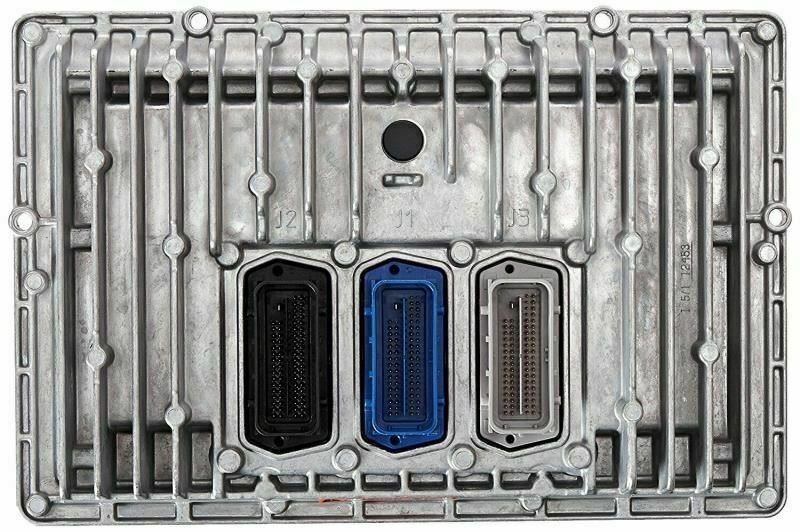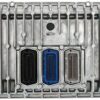Your Work Truck’s Brain, Restored.
When your Silverado, Sierra, Express, or Savana is down, every minute counts. A faulty Engine Control Module (ECM) can bring your entire operation to a halt, causing frustrating no-start conditions, poor performance, and persistent check engine lights. This isn’t just an inconvenience; it’s lost time and money. This genuine OEM ECM, professionally programmed to your vehicle’s specific VIN, is the definitive solution to get your 2013-2014 GM 6.6L Duramax ECM system functioning correctly and put your reliable workhorse back on the job.
Common Symptoms & Your Solution
If your truck is experiencing any of the following, a failing ECM is the likely culprit:
- Complete no-start or intermittent starting issues
- Check Engine Light with communication-related Diagnostic Trouble Codes (DTCs) like U0100 (Lost Communication With ECM/PCM) or P0606 (ECM/PCM Processor Fault)
- Poor engine performance, reduced power, or erratic shifting
- Fuel injector or other sensor circuits showing faults
- Vehicle entering ‘limp mode’ unexpectedly
Swapping in a junkyard module won’t work due to the complex anti-theft and vehicle-specific systems. Our service bridges that gap. We take a reliable, tested OEM unit and flash it with the latest GM software calibrated precisely to your VIN, making installation as straightforward as possible.
Features & Benefits
- ✔ VIN-Specific Programming: We program the module to your truck’s VIN before shipping, ensuring it communicates correctly with your vehicle’s other systems right out of the box.
- ✔ Latest GM Calibrations: Your ECM arrives with the most current software updates from General Motors, helping to optimize fuel economy, emissions, and engine performance.
- ✔ Cost-Effective OEM Reliability: Get the proven durability of a genuine OEM part without the high dealership price tag. This is the same hardware your truck was built with.
- ✔ Fast Turnaround: We understand that downtime is critical. We program and ship your module promptly so you can get your vehicle repaired and back in service.
- ✔ Peace of Mind: This unit is backed by our one-year replacement warranty.
Expert Insight: The ‘Theft Relearn’ Process
As a 20-year technician, I’ve seen many people get stuck after installing a new ECM. On these GM trucks, the ECM is a critical part of the Pass-Key III+ or Vehicle Theft Deterrent (VTD) system. When you install this module, your truck’s Body Control Module (BCM) may not recognize it, preventing the engine from starting. This is a security feature, not a defect. A ‘theft relearn’ procedure is required to sync the new ECM with your existing keys and BCM. While sometimes a manual 30-minute key cycle procedure works, many 2013-2014 models require a professional scan tool with access to GM’s TIS2WEB system. We strongly recommend having a qualified mechanic lined up for installation to ensure this final step is completed smoothly.
By purchasing this 2013-2014 GM 6.6L Duramax ECM, you’re not just buying a part; you’re investing in a reliable, professional solution to a complex problem. We handle the critical programming so you can focus on the installation and get back to what matters most.
Frequently Asked Questions
How do I provide my VIN number?
After you complete your purchase, please send us a message with your 17-digit Vehicle Identification Number (VIN). We cannot program or ship your ECM without it.
What is a ‘theft relearn’ and will I have to do it?
A theft relearn syncs the new ECM to your vehicle’s anti-theft system. It is very likely you will need to perform this procedure. It is the buyer’s responsibility and typically requires a professional scan tool with access to the GM programming system. Please consult with your mechanic before purchasing.
Is this ECM difficult to install?
Physically, the ECM is straightforward to replace, usually located in the engine compartment. However, the critical step is the electronic relearn procedures (theft, crankshaft variation, etc.) that must be done after installation. We recommend professional installation for this reason.
Will this fix my specific problem?
This programmed 2013-2014 GM 6.6L Duramax ECM is the solution for a faulty engine computer. While it resolves a wide range of issues, it’s essential to have your vehicle properly diagnosed by a professional to confirm the ECM is the root cause of your problem before ordering.
What does the one-year replacement warranty cover?
The warranty covers the ECM unit itself. If the module fails within one year of the purchase date, we will provide a replacement unit. The warranty does not cover labor, diagnostics, or shipping costs.
Does this part fit service number 12654088?
Yes. This computer is a direct replacement for service numbers 12653319 and 12654088, covering a wide range of 2013-2014 GM 6.6L Duramax applications.


